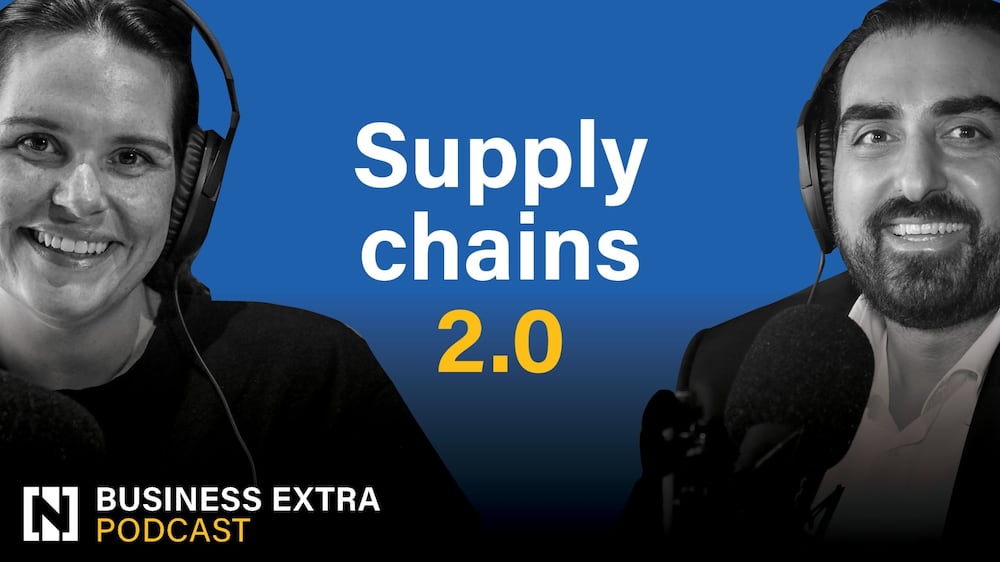In Morocco, lorries from a Connecticut logistics company ferry car parts and clothing across the Strait of Gibraltar. In Japan, a new semiconductor plant transforms a once-quiet farm town. In France, a battery plant’s staff learns to supervise new colleagues: robots.
These moments, which might seem unrelated, represent a transformation in world trade. US-China tension and Russia’s invasion of Ukraine are leading companies to bring supply chains closer to home. A shift from fossil fuels is spurring demand for materials essential for electrification.
Artificial intelligence is forcing employees to learn new skills so they will not be replaced by computers.
Long before these trends are reflected in government data, they are already changing global commerce, which amounts to $32 trillion a year in goods and services, according to the World Trade Organisation.
Local trade routes are stretched thin
On a good day, Shelby Alamillo crosses the Rio Grande eight times. He drives along the World Trade Bridge, whose eight lanes of dusty roadway connect Mexico’s industrial heartland and South Texas.
A lorry driver for a company called Super Transporte Internacional SA de CV, Mr Alamillo, 39, is hauling – or, as he says, moving – car parts to and from the US and Mexico.
“It’s very impressive, all the trailers that cross per day,” he says. “The first move that I made, wow, I was in shock.”
Port Laredo, as it is called, includes an airport, one rail and four vehicle bridges. No other US land, sea or air crossing has been handling a higher dollar value of goods each day. Avocados, furniture and cars make their way north from Mexico. Car parts, corn and petrol head south from the US.
Supply chains are ready for disruption, according to VC - Business extra

For now, Mr Alamillo says, traversing the bridge can take as little as 10 minutes, though about once a week, he runs into backups of three to four hours. The Texas Department of Transportation predicts that by 2050, its average crossing time could reach eight hours and 47 minutes.
This year, South Korea’s Kia and Austin-based Tesla announced plans for new electric-vehicle production in the Mexican border state of Nuevo Leon, where foreign investment is booming.
Traffic is surging as the US tries to source more supplies from Mexico because of the trade war with China.
Maeva Cousin, a Bloomberg economist, calculates that US imports of tariffed goods from China are down about $150 billion from where they would otherwise be. Mexico is filling much of the gap.
The port of entry is situated in Laredo, a city of Spanish colonial buildings and a quarter million residents. Nearby, developers are building millions of square feet of warehouse and industrial space because of the surge in international trade.
Local officials are pushing for federal approval to expand the bridge to 10 lanes, as well as add an eight-lane crossing alongside – at a cost of at least $40 million for both.
“We’re probably a few years behind where we need to be,” says Gene Lindgren, chief executive of the Laredo Economic Development. “But we have a plan to catch up.”
Innovators need incubators
Tucked in the rolling green hills of County Kerry in western Ireland, a start-up is conducting an experiment that could shake up global manufacturing. The company, Wazp, makes hand and face mannequins for Ikea that are used in interior design and retail displays.
The Swedish retailer, known for its cheap prices, would typically look to low-cost countries such as China for manufacturing. But Wazp can offer Ikea an alternative: 3D printing.
A Wazp employee uses the boxy white printer, roughly the size of the office Xeroxes of yore, to make a life-size mesh hand.
With a keystroke from a computer, the machine makes one in minutes out of plastic resin, and employees then brush off excess powder as if it were snow from a windscreen.
For co-founders Shane Hassett and Mariana Kobal, it is the next frontier: manufacturing on demand. Mr Hassett and Ms Kobal spent a year at a local university incubator developing a business plan.
The Irish government is helping fund the business – until, ideally, the company attracts more private capital. Mr Hassett says profitability is within sight. The company has already expanded into making the outsoles of Vivobarefoot shoes.
Until recently, 3D printing has been used for making prototypes, not for mass production. Mr Hassett says it will not be long before it supplants labour-intensive factories, bringing manufacturers closer to customers and reducing waste and carbon emissions.






